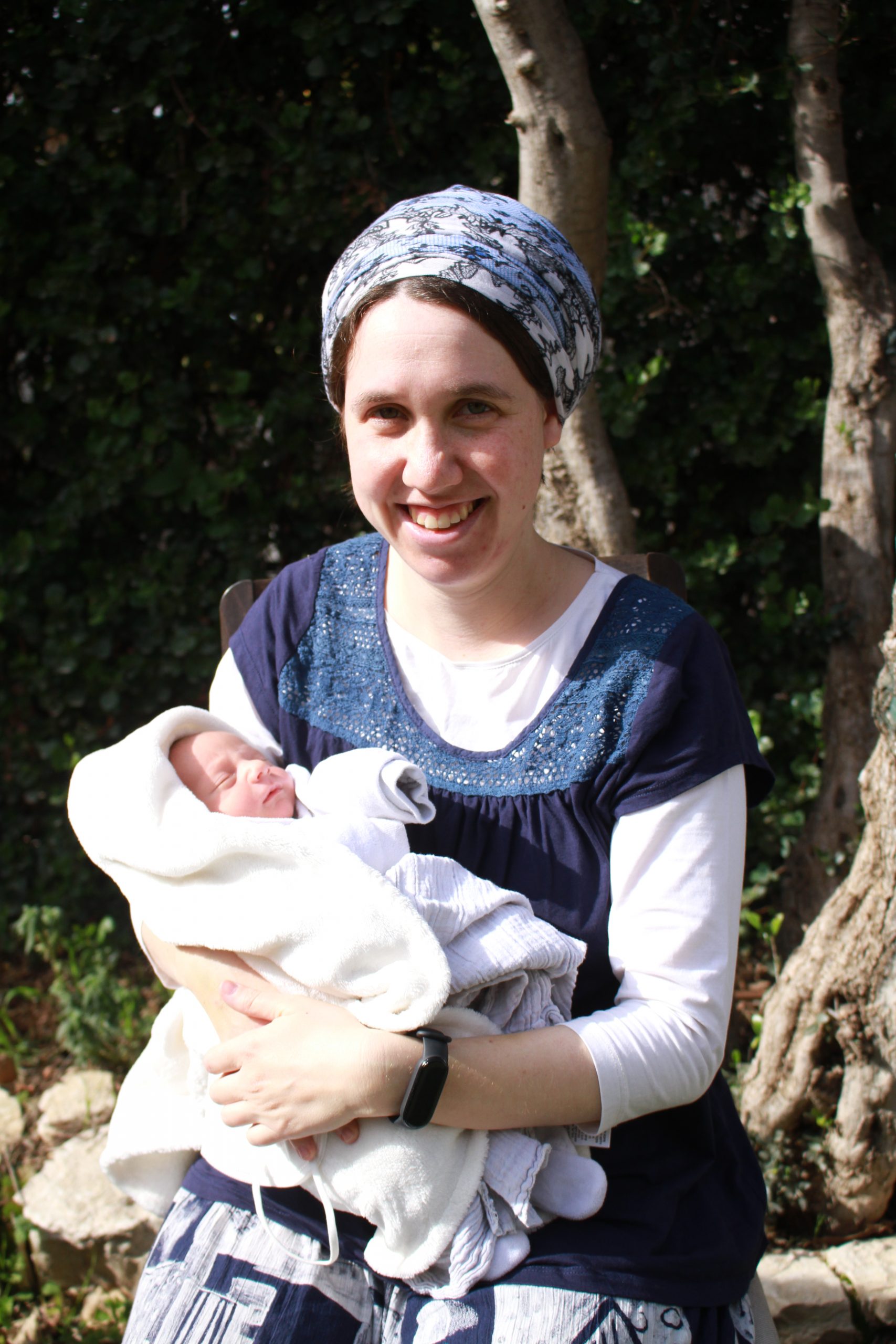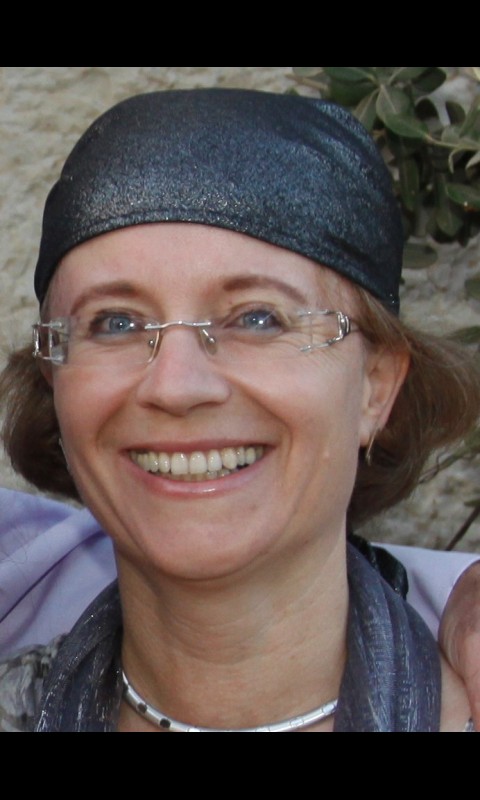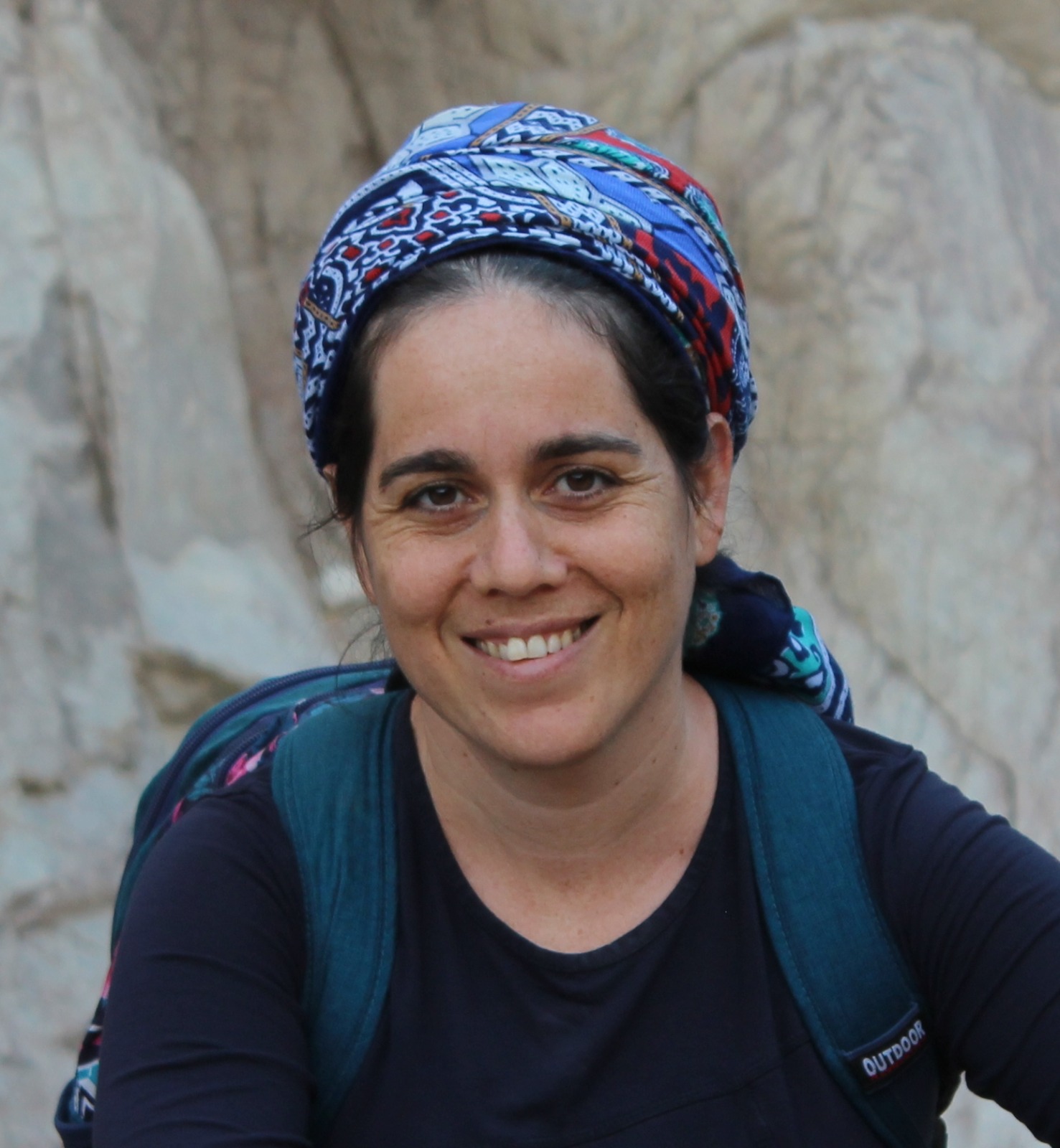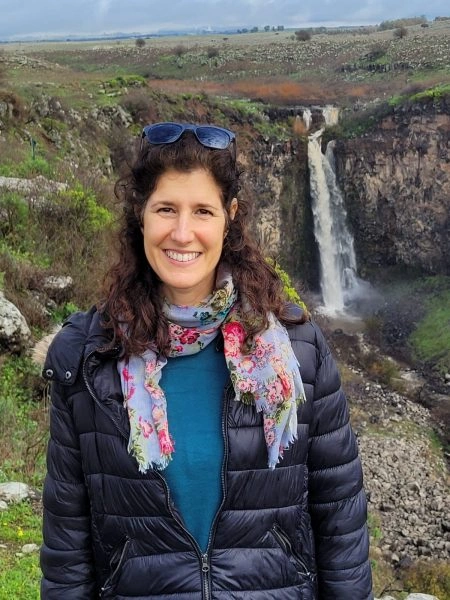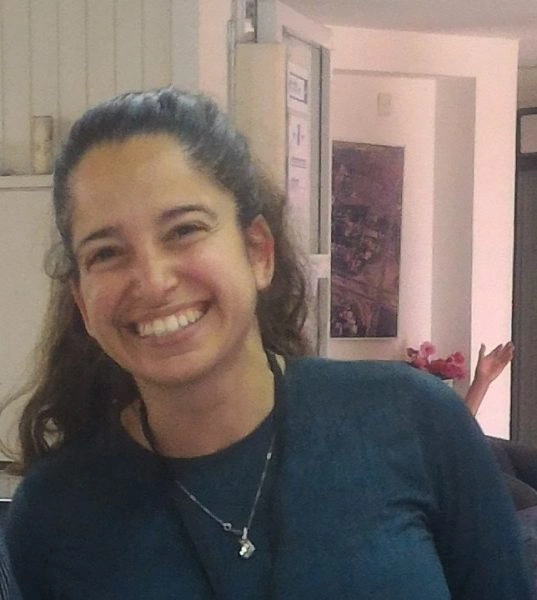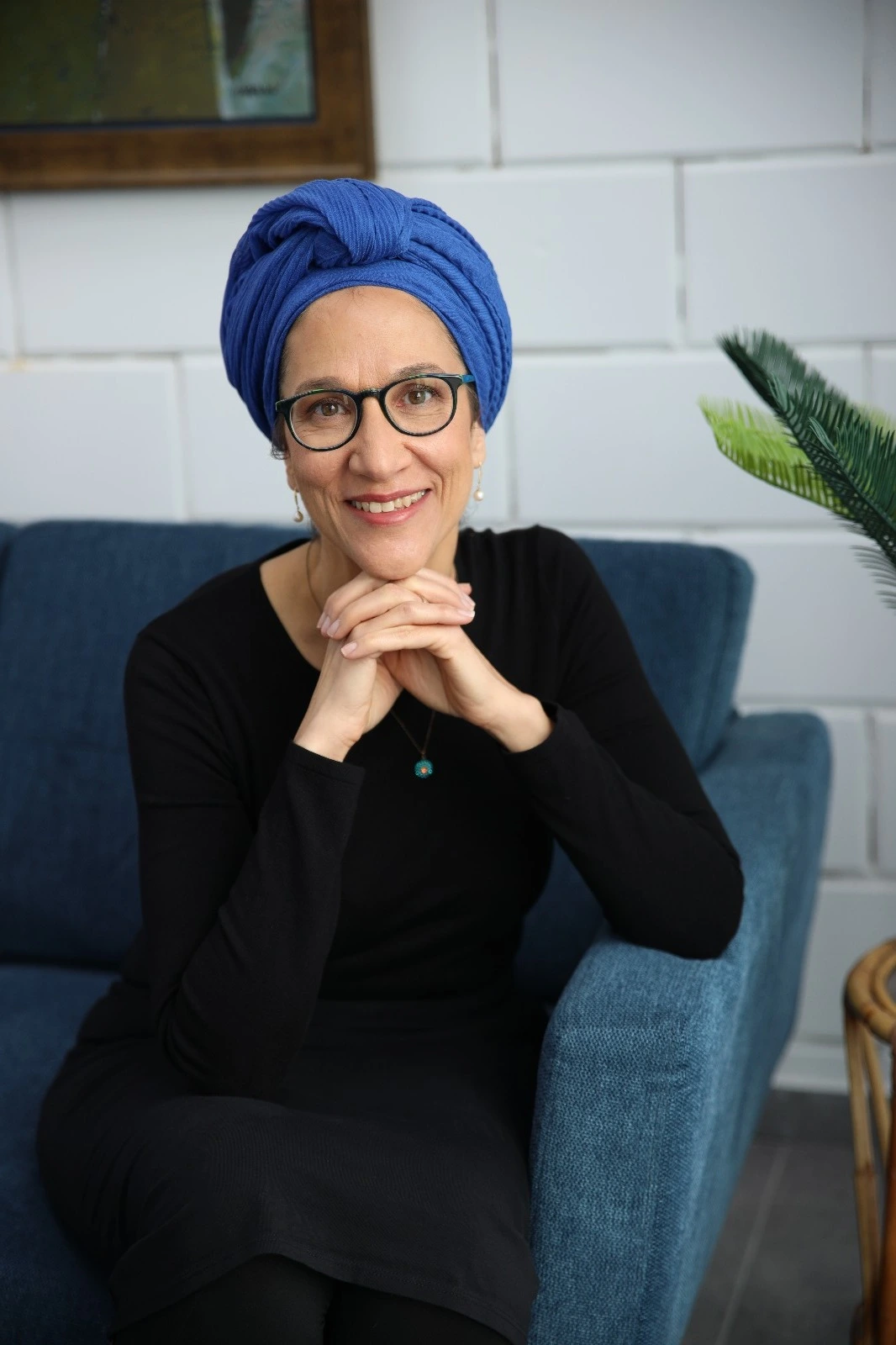דיון בברייתא עם שלושת הגישות לגבי עולת העוף והבנת המילה "כמשפט”. המשנה וגמרא דנים בהבדלים בגילאים בין בני יונה ותורים שיכולים להביא להקריב בבית המקדש.
לימוד השבוע מוקדש ע”י טינה לם לע”נ יצחק מאיר בן הרב צבי אריה ואסתר בתיה.
רוצים להקדיש למידה? התחל כאן:
לימוד השבוע מוקדש ע”י טינה לם לע”נ יצחק מאיר בן הרב צבי אריה ואסתר בתיה.
העמקה
רוצה להבין מה באמת קורה מתחת לפני השטח של הסוגיה?
שיעורים, פודקאסטים והרחבות של מיטב המורות שלנו יפתחו לך עוד זוויות וכיווני חשיבה.
חדשה בלימוד הגמרא?
זה הדף הראשון שלך? איזו התרגשות עצומה! יש לנו בדיוק את התכנים והכלים שיעזרו לך לעשות את הצעדים הראשונים ללמידה בקצב וברמה שלך, כך תוכלי להרגיש בנוח גם בתוך הסוגיות המורכבות ומאתגרות.
פסיפס הלומדות שלנו
גלי את קהילת הלומדות שלנו, מגוון נשים, רקעים וסיפורים. כולן חלק מתנועה ומסע מרגש ועוצמתי.
חולין כב
אוחז בראש ובגוף ומזה אף כאן אוחז בראש ובגוף ומזה
after the pinching, the priest holds [oḥez] the head and the body of the bird and sprinkles the blood on the altar, so too here, with regard to the bird burnt offering, he holds the head and the body and sprinkles the blood on the altar.
מאי קאמר הכי קאמר מה להלן כשהוא אחוז הראש בגוף מזה אף כאן כשהוא אחוז הראש בגוף מזה
The Gemara asks: What is he saying? There is no requirement with regard to a bird sin offering that the priest hold both the head and the body while sprinkling the blood. The Gemara answers that this is what he is saying: Just as there, with regard to the bird sin offering, when the head is attached [aḥuz] to the body, the priest sprinkles the blood on the altar, so too here, with regard to the bird burnt offering, when the head is attached to the body, the priest sprinkles the blood on the altar. This is what was cited above in the name of Rabbi Elazar, son of Rabbi Shimon, that one cuts a majority of two simanim in a burnt offering and not the two simanim in their entirety.
אי מה להלן בסימן אחד אף כאן בסימן אחד ת”ל והקריבו
The baraita continues: If so, perhaps just as there, in the sin offering, the pinching is performed with the cutting of one siman, so too here, in the burnt offering, the pinching is performed with the cutting of one siman. To counter this, the verse states: “And the priest shall bring it,” meaning that the burnt offering is sacrificed in a manner different from that of the sin offering, by cutting two simanim.
ות”ק וכי מאחר דנפקא לן מומלק והקטיר והקריבו למה לי
The Gemara asks: And according to the first tanna, once we derive that both simanim of a bird burnt offering must be cut in their entirety from the verse: “And pinch off its head…and burn it on the altar,” why do I need the phrase: “And the priest shall bring it?”
אי לאו והקריבו הוה אמינא מאי כמשפט כמשפט חטאת העוף
The Gemara answers: If not for the verse that states: “And the priest shall bring it,” I would say: What is the meaning of “according to the ordinance” that is stated with regard to the bird burnt offering? It means according to the ordinance of the bird sin offering mentioned in that same passage, in the sense that even in the burnt offering, the priest cuts only one siman.
ואי משום ומלק והקטיר הוה אמינא מה הקטרה בראשו של מזבח אף מליקה בראשו של מזבח
And if you would say that one cannot suggest this interpretation due to the verse: “And pinch off its head…and burn it on the altar,” I would say that perhaps another halakha would be derived from that verse: Just as burning the offering is atop the altar, so too pinching is performed atop the altar.
השתא דכתב רחמנא והקריבו דרוש ביה נמי הא
Now that the Merciful One writes: “And the priest shall bring it,” indicating the distinction between the pinching of a bird burnt offering and the pinching of a bird sin offering, derive this also from the verse: “And pinch off its head…and burn it on the altar,” i.e., that the body and the head of a bird burnt offering must be completely separated.
חטאת בהמה דאינה באה אלא מן החולין מנלן אמר רב חסדא דאמר קרא (ויקרא טז, ו) והקריב אהרן את פר החטאת אשר לו משלו ולא משל צבור ולא משל מעשר
§ The first tanna of the baraita derives from the analogy between the bird burnt offering and the animal sin offering that a bird burnt offering is brought only from non-sacred animals and not from an animal purchased with second-tithe money, that it is sacrificed only during the day, and that the priest sacrificing it must do so with his right hand. The Gemara asks: From where do we derive the halakha that an animal sin offering comes only from non-sacred animals? Rav Ḥisda said that the verse states: “And Aaron shall sacrifice the bull of the sin offering that is his” (Leviticus 16:6, 11), from which it is derived: The animal must come from his cattle, but not from communal property, from his cattle, but not from second-tithe property.
ביום (ויקרא ז, לח) מביום צוותו נפקא כדי נסבה
The Gemara objects: The halakha that the bird burnt offering is sacrificed only during the day is derived from the verse: “In the day that he commanded the children of Israel to present their offerings” (Leviticus 7:38), not from the halakha of the animal sin offering. The Gemara explains: The requirement of sacrificing the bird burnt offering during the day is not derived from the halakha of the animal sin offering, and it was cited in that list incidentally, for no reason [kedi].
ידו הימנית מדרבה בר בר חנה נפקא דאמר רבה בר בר חנה אר”ש בן לקיש כל מקום שנאמר אצבע או כהונה אינה אלא ימין
The Gemara objects: The halakha that the priest performs the service with his right hand is derived from the statement of Rabba bar bar Ḥana, as Rabba bar bar Ḥana says that Rabbi Shimon ben Lakish says: Any place where the terms finger or priesthood are stated with regard to offerings, the sacrificial rites of that offering are performed only with the right hand, and in the context of the bird burnt offering the term “priest” is employed. It is therefore unnecessary to derive this halakha from the analogy to the animal sin offering.
ואידך כהונה בעיא אצבע אצבע לא בעיא כהונה
The Gemara responds: And the other tanna, the first tanna of the baraita, who derived that the right hand is used from the analogy to the animal sin offering based on the term “according to the ordinance,” did not derive it from the statement of Rabba bar bar Ḥana because in his opinion, in order to derive that the right hand must be used, if the verse mentions only the priesthood, it requires mention of finger for the limitation to apply. If the verse mentions only the term finger, then it does not require a mention of the priesthood as well. With regard to the bird burnt offering, the priesthood is mentioned, but the word finger is not. Therefore, the halakha must be derived from the animal sin offering.
ותנא קמא ורבי אלעזר בר’ שמעון ממול העורף מנא להו גמרי מליקה ממליקה:
It is taught in the baraita that Rabbi Yishmael derived from the term “according to the ordinance” that is written with regard to the bird burnt offering that the pinching of the bird burnt offering is performed at the nape of the neck, as it is in a bird sin offering. The Gemara asks: And as for the first tanna and Rabbi Elazar, son of Rabbi Shimon, who derive other matters from that term, from where do they derive that pinching of the bird burnt offering is performed at the nape of the neck? The Gemara answers: They derive pinching that is written with regard to the burnt offering: “And pinch off its head” (Leviticus 1:15), from pinching that is written with regard to the sin offering: “And pinch off its head adjacent to its neck” (Leviticus 5:8).
מתני׳ כשר בתורין פסול בבני יונה כשר בבני יונה פסול בתורין תחלת הציהוב בזה ובזה פסול:
MISHNA: It is written with regard to bird offerings: “He shall bring his offering of doves, or of young pigeons” (Leviticus 1:14). The age that is fit for sacrifice in doves, mature birds, is unfit for sacrifice in pigeons, immature birds;the age that is fit for sacrifice in pigeons is unfit for sacrifice in doves. At the intermediate stage of the beginning of the yellowing of its plumage (see 22b), a bird is unfit both as this, a pigeon, and as that, a dove, since it is no longer a fledgling but is not yet a mature bird.
גמ׳ ת”ר תורין גדולים כשרים קטנים פסולים בני יונה קטנים כשרים גדולים פסולין נמצא כשר בתורין פסול בבני יונה כשר בבני יונה פסול בתורין
GEMARA: The Sages taught a baraita in explaining the mishna: Doves, when they are older, are fit for sacrifice; when they are younger, they are unfit. Pigeons, when they are younger, are fit for sacrifice; when they are older, they are unfit. It is found that that which is fit for sacrifice in doves is unfit for sacrifice in pigeons; that which is fit for sacrifice in pigeons is unfit for sacrifice in doves.
תנו רבנן תורים גדולים ולא קטנים שיכול והלא דין הוא
The Sages taught in a baraita with regard to the verse: “And he shall bring his offering of doves, or of young pigeons” (Leviticus 1:14), that doves are older and not younger. As one might have thought: And couldn’t this be derived through an a fortiori inference:
ומה בני יונה שלא הוכשרו בגדולים הוכשרו בקטנים תורים שהוכשרו בגדולים אינו דין שהוכשרו בקטנים ת”ל (ויקרא א, יד) תורים גדולים ולא קטנים
If pigeons, which were not deemed fit when older, were deemed fit when younger, as the term “young pigeons” indicates that they are young, then with regard to doves, which were deemed fit when older, isn’t it logical that they were deemed fit when younger? Therefore, the verse states: “Doves,” meaning older and not younger.
בני יונה קטנים ולא גדולים שיכול והלא דין הוא ומה תורים שלא הוכשרו בקטנים הוכשרו בגדולים בני יונה שהוכשרו בקטנים אינו דין שהוכשרו בגדולים תלמוד לומר בני יונה קטנים ולא גדולים
The baraita continues: Young pigeons must be younger and not older, as one might have thought: And couldn’t this be derived through an a fortiori inference: If doves, which were not deemed fit when younger, were deemed fit when older, then with regard to pigeons, which were deemed fit when younger, isn’t it logical that they were deemed fit when older? Therefore, the verse states: “Young pigeons,” meaning younger and not older.
מאי תלמודא אמר רבא לא לישתמיט קרא ולכתוב מן בני התורים או מן היונה
The Gemara asks: What is the biblical derivation of these matters? Rava said: It is derived from the fact that it is not found that the verse would deviate from the norm and write: Of young doves, or of pigeons; rather, the wording in the Torah is always “of doves” or “of young pigeons.” Evidently, doves must be older and pigeons must be younger.
אימא בני יונה דכתב בהו רחמנא בני קטנים אין גדולים לא תורים אי בעי גדולים לייתי אי בעי קטנים לייתי דומיא דבני יונה מה בני יונה קטנים אין גדולים לא אף תורים גדולים אין קטנים לא
The Gemara objects: Say instead that with regard to pigeons, since the Merciful One writes: “Young,” this means younger birds, yes, older birds, no; but with regard to doves, if one wishes, let him bring older birds, and if he wishes, let him bring younger birds. The Gemara responds: Since doves and pigeons are always juxtaposed to one another in the Torah, it is derived that the halakha of doves is similar to the halakha of pigeons: Just as with regard to pigeons the halakha is younger birds, yes, older birds, no, so too with regard to doves, the halakha is older birds, yes, younger birds, no.
ת”ר יכול יהו כל התורים וכל בני היונה כשרים תלמוד לומר מן התורים ולא כל התורים מן בני היונה ולא כל בני יונה פרט לתחילת הציהוב שבזה ושבזה שפסול מאימתי התורים כשרים משיזהיבו מאימתי בני יונה פסולין משיצהיבו
The Sages taught in a baraita: One might have thought that all the older doves or all the younger pigeons would be fit for sacrifice; therefore, the verse states: “Of doves,” and not all doves; “of young pigeons,” and not all young pigeons. This serves to exclude birds at the beginning of the yellowing of their neck plumage, which are unfit as this, doves, and as that, pigeons. They are unfit as doves because they are not sufficiently old and as pigeons because they are no longer young. The tanna elaborates: From when are the doves fit? It is from when the color of their feathers turns a glistening gold. From when are the pigeons unfit? It is from when their feathers turn yellow.
תני יעקב קרחה מאימתי בני יונה כשרים משיעלעו הוא תני לה והוא אמר לה (איוב לט, ל) אפרוחיו יעלעו דם אימת אמר אביי מכי שמיט גדפא מיניה ואתי דמא
Ya’akov Korḥa taught a baraita: From when are pigeons fit? It is from when ye’alu. He teaches the baraita and he states its explanation: The reference is to that which is stated: “Its fledglings will suck up [ye’alu] blood” (Job 39:30). When is that? Abaye said: It is from the stage when one plucks a feather from it and blood emerges.
בעי רבי זירא האומר הרי עלי עולה מן התורים או מן בני היונה והביא תחלת הציהוב שבזה ושבזה מהו ספיקא הוי ונפיק או דילמא בריה הוי ולא נפיק
§ Rabbi Zeira raises a dilemma: With regard to one who says: It is incumbent upon me to bring a burnt offering of doves or of pigeons, and he brought birds at the beginning of the yellowing of their neck plumage of this, doves, and of that, pigeons, what is the halakha? Is it a case of uncertainty whether it is considered older or younger, and therefore when he brings both he fulfills his obligation, as one of the birds was fit for sacrifice; or perhaps a bird at the beginning of the yellowing is an entity in and of itself and is neither older nor younger, and he does not fulfill his obligation?
אמר רבא תא שמע פרט לתחילת הציהוב שבזה ושבזה שפסול אי אמרת בשלמא בריה הוי שפיר אלא אי אמרת ספיקא הוי איצטריך קרא למעוטי ספיקא
Rava said: Come and hear proof from the baraita where it is taught that the verse: “Of doves or of young pigeons,” serves to exclude birds at the beginning of the yellowing of their neck plumage that are unfit as this, doves, and as that, pigeons. Granted, if you say that a bird at that stage is an entity in and of itself, that works out well, as the verse serves to ensure that a bird at that stage of development will never be sacrificed. But if you say that it is a case of uncertainty, was it necessary for the verse to exclude a case of uncertainty?























